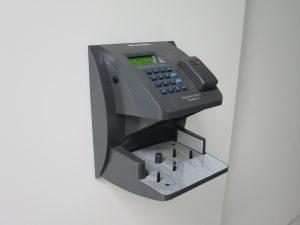No matter how big a company or what industry they work in; you would struggle to find a business that didn’t use some form of data centre or cloud computing services. Organisations with a heavier reliance on IT are probably using both and may have had to choose between the two when designing their systems. So, what are they and what’s the difference between them?
The Basics
A data centre provides the physical space, power, cooling, resilience and security that an organisation may use to host computer and telecommunication systems including servers, storage and networking equipment. Cloud computing is the use of someone else’s computer resources or services such as Private Cloud or Microsoft Office 365.
The cloud isn’t really a cloud
Believe it or not, the “cloud” isn’t really a cloud. It’s not a magical land of endless bits and bytes floating in outer space. Most (if not all) cloud services are powered by data centres. The data centre is the physical location which houses the fairly ordinary servers, storage and networking equipment required to build and run a cloud service. Some, like Google and Facebook, are built inside huge purpose-built private (and often secretive) facilities spread out across the globe while others share space inside dedicated data centres (known as co-location).
What is a data centre?
So, what makes the data centre so important and what are they really? Firstly, they can vary in size, form and function and the computer room in a small business’s office is just as much a data centre as the ones Google and Facebook build. However, if we focus on the purpose-built facilities which run most of the world’s cloud services there are a few key things which make them important:
- Power – the servers, storage and networking equipment which make up a “cloud service” requires a lot of power. The bigger the cloud the more power it will need. Even a small cloud can easily require more electrical energy than would normally be available in an office or business premises. Many data centres have power supplies that can be measured in tens of Megawatts (that’s the equivalent of about 110,000 laptop computers running at the same time).
- Cooling – power equals heat. Data centres have highly engineered cooling systems which can reliably and efficiently extract the vast amounts of heat energy generated by the equipment they house.
- Reliability – the number one goal of any data centre is to keep the power on and the cooling systems working 24 hours a day, 7 days a week, 365 days a year. They achieve this by having redundant air-conditioning systems, multiple connections to the power grid, backup generators and complex monitoring systems so the facility managers can rapidly identify problems and resolve them.
- Security – for many companies using a data centre, security of their equipment and the data it stores is crucial. Most data centres are highly secure facilities which are surrounded by cameras, require swipe cards and biometrics (such as fingerprint scans) to gain access and many have 24/7 security guards on site.

Rack of servers inside a data centre housing computer equipment.

A biometric handprint scanner controlling access to a data centre facility.
What is cloud computing?
Clouding computing is simply using someone else’s computers and resources to store data or create and access services. As we discussed above, almost all of these computers and the systems which support them are hosted inside data centres.
There are many different types of cloud computing services with varying purposes but the three most common are:
- Software as a Service – these are the types of cloud computing services most people are familiar with and include Microsoft Office 365, Google Apps, Salesforce, Zoho and many more. The provider makes their software available as a service in exchange for a monthly fee. The infrastructure and storage required to provide those services are managed by the provider and the end user simply consumes the software on a pay as you go type model.
- Private Cloud or Infrastructure as a Service – this type of cloud computing allows an organisation to use server resources to build their own services without the investment in the hardware and infrastructure required to run them. In most cases the user will lease resources such as RAM, CPU, disk space and network capacity and pay for only what they use. Some of the best known providers of these types of services include Microsoft Azure, Amazon AWS and Google Cloud Platform, all of which are commonly known as “public cloud” services. Private cloud services are essentially the same but offered by smaller organisations (such as us) and often support niche, highly customised configurations, cater for unique connectivity requirements and have negotiable billing models.
- Platform as a Service – similar to private cloud and infrastructure as a service, PaaS provides resources which allow an orgnisation to build their own services. However, in addition to physical compute and storage resources, the service also provides access to operating systems, databases, development tools, automation and analytics. Some well known providers include Salesforce, Google App Engine, Amazon AWS, Microsoft Azure and SAP.
Caznet has over 15 years of experience in both Private Cloud and Co-Location services across our Adelaide based data centre facilities and offer free consultations to organisations looking at the structure of their IT systems.






